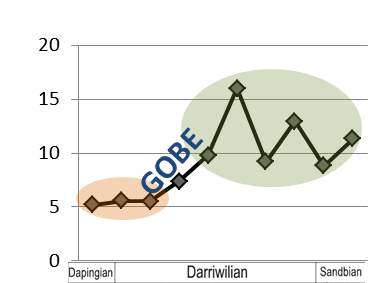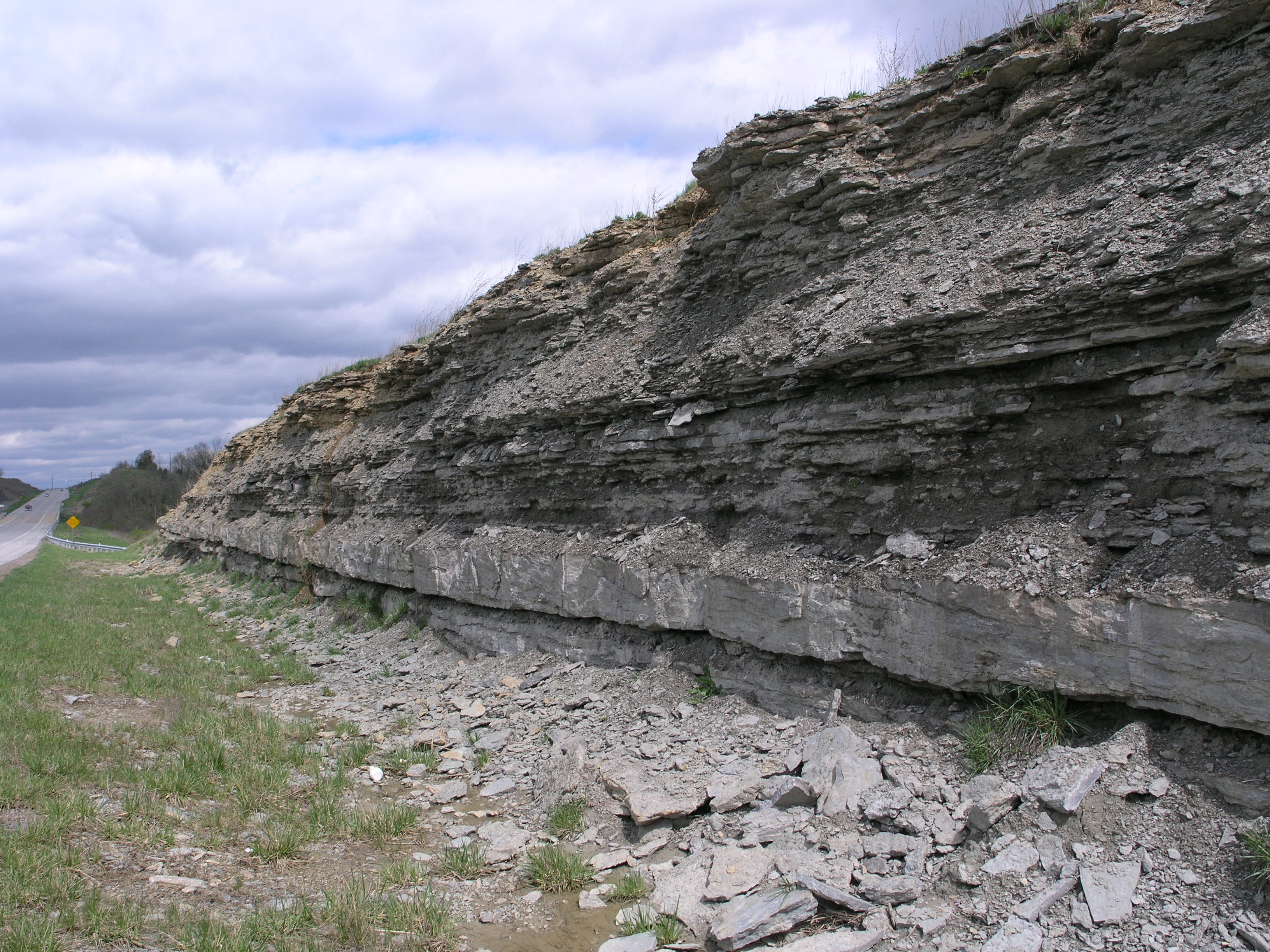
Pattern of rhynchonelliform brachiopod diversification in mid-continental Laurentia. Trubovitz & Stigall, 2016.
The Cambrian Explosion records the first occurrence of most animal phyla, but dramatic diversification of marine organisms at the family and genus level did not occur until the ‘Great Ordovician Biodiversification Event’ (GOBE) nearly 40 ma later. The GOBE includes a series of diversifications that completely modified marine food webs and that, for the first time in geological times, established modern marine ecosystems. Timing of the radiations varied among clades and paleocontinents. A diverse set of biotic and abiotic drivers have been proposed to facilitate this diversification, but testing of most of these requires an international effort to improve our data quality and quantity.
Our research lab is developing the first species-level diversity curve for Laurentian brachiopods across the GOBE interval based on the Simpson Group strata of central Oklahoma. We are also examining the role of dispersal and phylogenetic history on faunal assembly at a global level with our international colleagues.
As part of this work, I am co-leader of the IGCP 653: the Onset of the “Great Ordovician Biodiversification Event.” This project will focus on interdisciplinary investigations, including case studies from international sites, involving specialists from the fields of palaeontology, sedimentology, stratigraphy, geochemistry, palaeooceanography, palaeoclimatology, etc., in collaboration with the Subcommission on Ordovician Stratigraphy (SOS). The results of the project will contribute to the understanding of the triggering causes of the establishment of modern marine ecosystems, but also to the identification of the reasons of the first collapse of these environments during the Late Ordovician mass extinction. The project involves scientists from all over the world, and through the organization of dedicated workshops, will integrate graduate and doctoral students, in particular from developing countries. Visit the project website here.
This research has been supported by grants from UNESCO and Ohio University.



